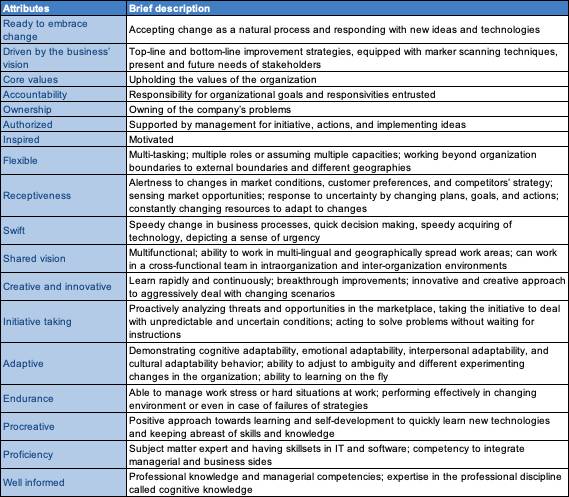How Can Artificial Intelligence Improve Departmental Performance?

Image Source: Freepik
Through a variety of ways, artificial intelligence (AI) can help organizations enable and focus on better decision-making. AI could take over administrative roles and allow humans to prioritize more valuable things that require more time. The intelligent agent can take over manual tasks and enable process automation. AI can also plan decisions or predict results based on historical data.
That holds true even at the departmental level. Freeing managers from worries related to repetitive, administrative, and employee compliance tasks gives them more time for performance management activities. This is reflected in the use of AI as a behavioral assessment tool, data-driven processes where teams are coordinated through feedback, and more opportunities for meaningful human interaction.
AI in Performance Management
According to a study conducted by the University of Twente, there are two ways to implement AI in an organization. On a small scale, AI can assist a manager in improving small parts of the system, like inventory optimization. On a larger scale, AI could play a role in redesigning core processes at the organizational level.
One thing to pay attention to is knowing which type of implementation to choose. In an environment where human interaction and feedback are essential, it would not be the wisest choice to go for the second option as it could affect human connections.
The best-case scenario is to benefit from an assisting AI as it would help the manager make decisions while the assistant processes a vast amount of data. This will not only speed up the decision-making process but also guarantee the data veracity.
AI makes its mark on performance management systems through digitalization. Real-time feedback is important now more than ever due to the changes within performance management. The traditional yearly review is now being replaced by more frequent and informal check-ins as this would enable the shift from talking about people to talking with people. The 360-degree feedback practice focuses on asking colleagues for feedback on an employee’s performance.
Another strong point of AI is that it eliminates the biases toward individuals by assessing patterns and historical data with no opinion that might dilute decisions. While the line managers or HR may have their personal opinions about employees coincide with their responsibilities, AI supports decision-making by eliminating biases and diminishing the number of human errors.
Read More >> Artificial Intelligence’s Potential in Reshaping Corporate Strategic Management
AI for HR
At the HR department, the implementation of an AI system will not only process the data faster but will also deliver robust data collection, frequent fact-based performance, and improvement discussions. HR managers are responsible for their teams’ attitudes and behavior so that they can truly contribute to organizational goals.
In 2018, IBM realized the need for AI in mitigating biases and improving departmental performance. This is why IBM Smarter Workforce Institute wrote the paper “The role of AI in mitigating bias to enhance diversity and inclusion,” in which practical recommendations are offered for organizations that are looking to adopt AI in their HR daily activities.
Efficient and effective recruitment – A recruiter’s main challenges are prioritizing all the roles they are responsible for and finding a way to differentiate among candidates that applied for the same position. Deploying AI determines how long a job requisition will take to fill based on past data so that recruiters can prioritize the roles available.
Moreover, AI can predict future performance by determining the match between a resume and the job requisition and filtering candidates. The challenge in IBM regarding effective recruitment is to help HR managers surface the top candidates for the open positions and prioritize the most important requisitions. Their solution is IBM Watson Recruitment, an AI system that assesses information about the job market and past experiences of potential candidates in order to predict the necessary time to fill in positions and spot the most suitable candidates.
The huge advantage for recruiters is that they can focus on building and nurturing relationships with applicants. At the same time, AI collects the demanded skills from job requisitions and generates a score against skills mentioned in resumes. Finally, IWR watches over the hiring decisions to make sure they are free from bias and turns the candidate and recruiter’s experiences into better ones.
Read More >> In Pursuit of Holism: Best Practices for Employee Performance Management
Enhancing motivation – At IBM, the individual needs of employees are essential, and managers get alerts about it. For example, the manager is alerted when there is an employee with years of experience in the company, has skills, and is ready for a promotion. The same applies to the case of employees with a higher propensity to leave or when employees from a specific department are at risk of missing their targets.
Through this alarm signal, managers are able to make decisions over the organization’s talent management approach. Another AI implication is the chatter analysis used to capture the top three internal issues from social media sources. Leaders can receive personalized recommendations to increase the team’s engagement. Other benefits brought by AI can be smarter compensation planning and career development.
The drawbacks of AI systems can be avoided by making sure the data is never used as a sole determinator in decisions. AI initiatives can barely break organizational barriers, based on a survey conducted by Harvard Business Review in which only 8% of firms engage in core practices that support the adoption of Artificial Intelligence. The shift towards AI should start by aligning the organizational culture and the internal operating ways to support digital transformation. Here are the three main actions to scale up AI:
- Replace siloed work with cross-functional teams collaboration. The mix of perspectives increases the impact AI has over the processes as it ensures that projects address broad organizational concerns and not just isolated ones. Moreover, if end users are required to test what development teams work on, the chances of adoption increase.
- Abandon the top-down approach. Integrating AI into processes will increase the trust of employees in algorithms. They are the ones who will ultimately make a decision based on the algorithm result and their experience. Once they feel empowered to make decisions without having to consult a higher-up, they will get a taste of what AI can offer: freedom of action.
- Embrace an agile, experimental, and adaptable mindset. The idea of having an idea baked before it is deployed must be replaced with a test and learn vision. This reduces the fear of failure and allows companies to correct minor mistakes before they become costly ones by receiving early feedback from users.
AI’s ability to promote automated processes, analyze data, predicts trends, and even build frameworks helps the organization in its strategy and business planning. In order to maximize the product and effects of AI, it is essential to establish a strong strategy mindset.
The KPI Institute offers a program that would help you design an organization’s strategy and plan your business using a strategic framework. Enroll now in the Certified Strategy and Business Planning Professional Live Online course! For more details, visit The KPI Institute’s website HERE.
**********
Editor’s Note: This piece was first published in the 22nd PERFORMANCE Magazine – Printed Edition. The KPI Institute’s Business Research Analyst Aida Manea discusses in this article how AI supports decision-making by eliminating biases and diminishing the number of human errors.



